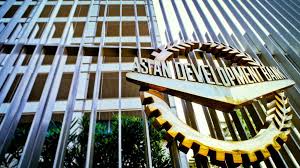ISLAMABAD – Developing Asia will maintain strong but moderating growth over 2019 and 2020, as supportive domestic demand counteracts an environment of global trade tensions, according to a new Asian Development Bank (ADB) report released on Thursday.
In a supplement to its Asian Development Outlook (ADO), ADB maintains growth forecasts for developing Asia at 5.7% in 2019 and 5.6% in 2020—unchanged from its April forecast.
These growth rates are slightly down from developing Asia’s 5.9% growth in 2018. Excluding the newly industrialized economies of Hong Kong, China; the Republic of Korea; Singapore; and Taipei, China, the regional growth outlook has been revised down from 6.2% to 6.1% in 2019 and maintained at that rate in 2020.
Deepening trade tension between the People’s Republic of China (PRC) and the United States (US) remains the largest downside risk to this outlook, despite an apparent truce in late June that could allow trade negotiations between the two countries to resume.
“Even as the trade conflict continues, the region is set to maintain strong but moderating growth,” said ADB Chief Economist Mr Yasuyuki Sawada. “However, until the world’s two largest economies reach an agreement, uncertainty will continue to weigh on the regional outlook.”
The growth outlook for East Asia in 2019 has been revised down to 5.6% because of slower than expected activity in the Republic of Korea. The sub-region’s growth outlook of 5.5% for 2020 is unchanged from April. Growth for the sub-region’s largest economy, the PRC, is also unchanged, with forecasts of 6.3% in 2019 and 6.1% in 2020, as policy support offsets softening growth in domestic and external demand.
In South Asia, the economic outlook is robust, with growth projected at 6.6% in 2019 and 6.7% in 2020, albeit lower than forecast in April. The growth outlook for India has been cut to 7.0% in 2019 and 7.2% in 2020 because the fiscal 2018 out-turn fell short.
The outlook for Southeast Asia has been downgraded slightly to 4.8% in 2019 and 4.9% in 2020 due to the trade impasse and a slowdown in the electronics cycle. In Central Asia, the growth outlook for 2019 has been revised up to 4.3% on account of an improved outlook for Kazakhstan.
Central Asia’s growth outlook of 4.2% for 2020 is unchanged from April. The growth outlook in the Pacific—3.5% in 2019 and 3.2% in 2020—is unchanged, as the sub-region continues to rebound from the effects of Cyclone Gita and an earthquake in Papua New Guinea, the sub-regions largest economy.
The major industrial economies have had slight revisions to their growth forecasts, with the US revised up to 2.6% for 2019 and the Euro area revised down to 1.3%. The growth outlook for Japan is unchanged at 0.8% in 2019 and 0.6% in 2020.
Developing Asia’s inflation projections were revised up from 2.5% to 2.6% for both 2019 and 2020, reflecting higher oil prices and various domestic factors, such as the continuing outbreak of African swine fever in several Asian economies, which is expected to drive up pork prices in the PRC.














